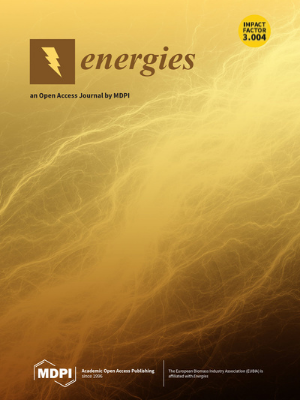设计初期天窗设计的敏感性分析和多目标优化
IF 3.2
4区 工程技术
Q3 ENERGY & FUELS
引用次数: 0
摘要
建筑几何形状的设计决定对能源效率和日照性能非常重要。敏感性分析与优化相结合,是在早期设计阶段研究和优化建筑几何形状的重要方法。在商业建筑中,采用天窗是一种重要的日光照明策略;然而,在先例研究中,天窗与楼层的比例(SFR)往往是唯一需要评估的设计变量。与天窗几何形状、窗台几何形状、天窗材料和建筑几何形状相关的更多设计变量需要进行评估。本研究调查了一座 2000 平方米商业建筑的天窗设计。根据对建筑能耗和日照性能的影响,对 18 个设计变量进行了评估。研究采用了一次分析法(OAT)、线性回归法和莫里斯敏感性分析法来确定影响最大的变量。十二个建筑几何变量中的七个和六个建筑材料变量中的两个被认为是重要变量。然后,利用遗传算法进行多目标优化,找出最佳设计方案。三个目标分别是能源使用强度(EUI)、日光自主性(DA)和日光均匀性(DU)。优化后,从帕累托前沿选出五个候选设计方案。对这些设计方案的特点进行讨论后,选出一个设计方案作为最优解。本文章由计算机程序翻译,如有差异,请以英文原文为准。
Sensitivity Analysis and Multi-Objective Optimization of Skylight Design in the Early Design Stage
Building geometry design decisions are important for energy efficiency and daylight performance. Sensitivity analysis, coupled with optimization, is an important approach to investigate and optimize building geometry in the early design stage. Incorporating skylights is an important daylighting strategy in commercial buildings; however, skylight-to-floor ratio (SFR) is often the only design variable evaluated in precedent studies. More design variables related to skylight geometry, clerestory geometry, skylight material, and building geometry need to be evaluated. This study investigates the skylight design of a 2000-square-meter commercial building. Eighteen design variables are evaluated according to their influence on building energy and daylight performance. One-at-a-time (OAT), linear regression, and Morris sensitivity analysis approaches are utilized to identify the most influential variables. Seven of the twelve building geometry variables and two of the six building material variables are considered as important. Then, a multi-objective optimization with genetic algorithms is processed to find out the optimal design solution. The three objectives are energy use intensity (EUI), daylight autonomy (DA), and daylight uniformity (DU). After the optimization, five candidate design options are picked from the Pareto front. Discussions are made on the features of these designs, and one design is selected as the optimal solution.
求助全文
通过发布文献求助,成功后即可免费获取论文全文。
去求助
来源期刊

Energies
ENERGY & FUELS-
CiteScore
6.20
自引率
21.90%
发文量
8045
审稿时长
1.9 months
期刊介绍:
Energies (ISSN 1996-1073) is an open access journal of related scientific research, technology development and policy and management studies. It publishes reviews, regular research papers, and communications. Our aim is to encourage scientists to publish their experimental and theoretical results in as much detail as possible. There is no restriction on the length of the papers. The full experimental details must be provided so that the results can be reproduced.
 求助内容:
求助内容: 应助结果提醒方式:
应助结果提醒方式:


